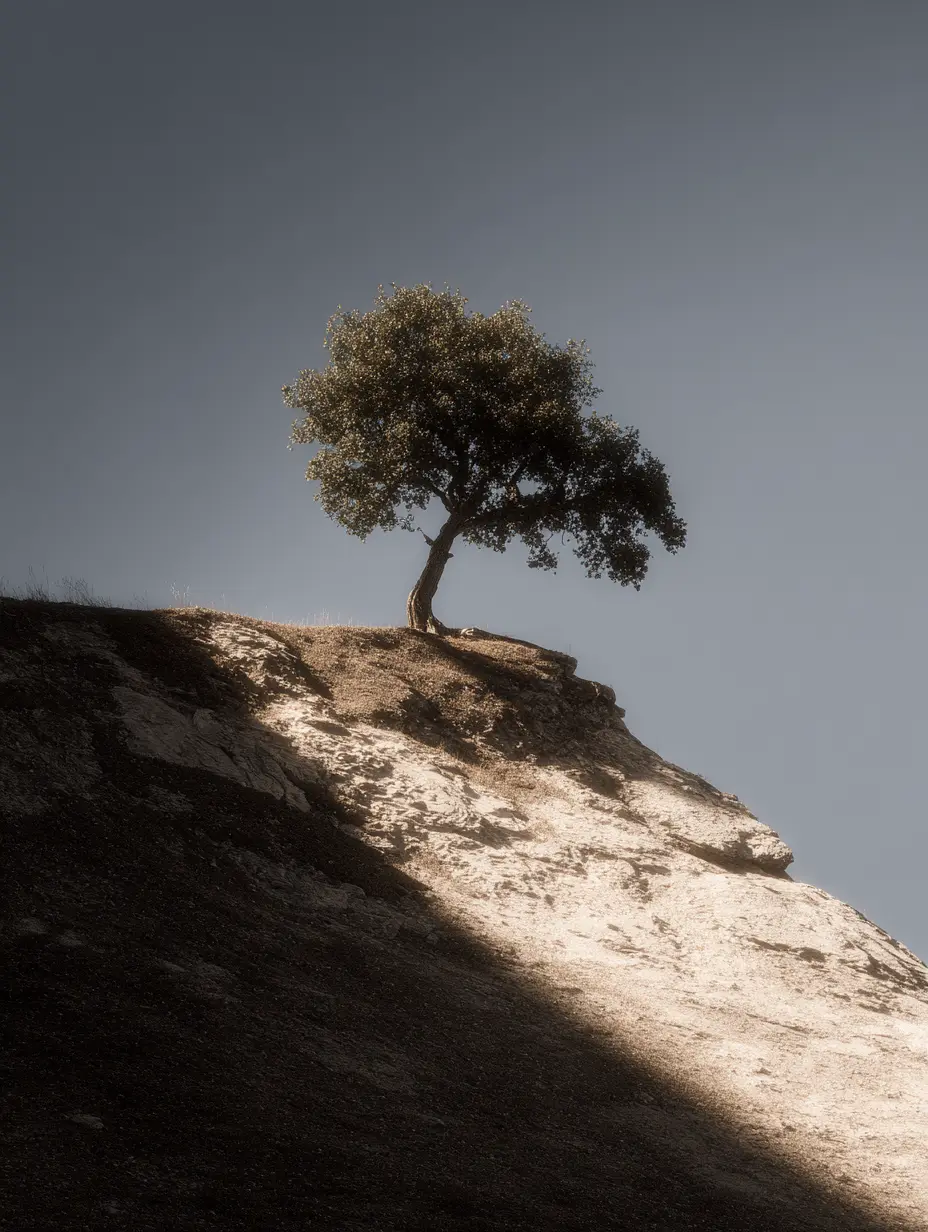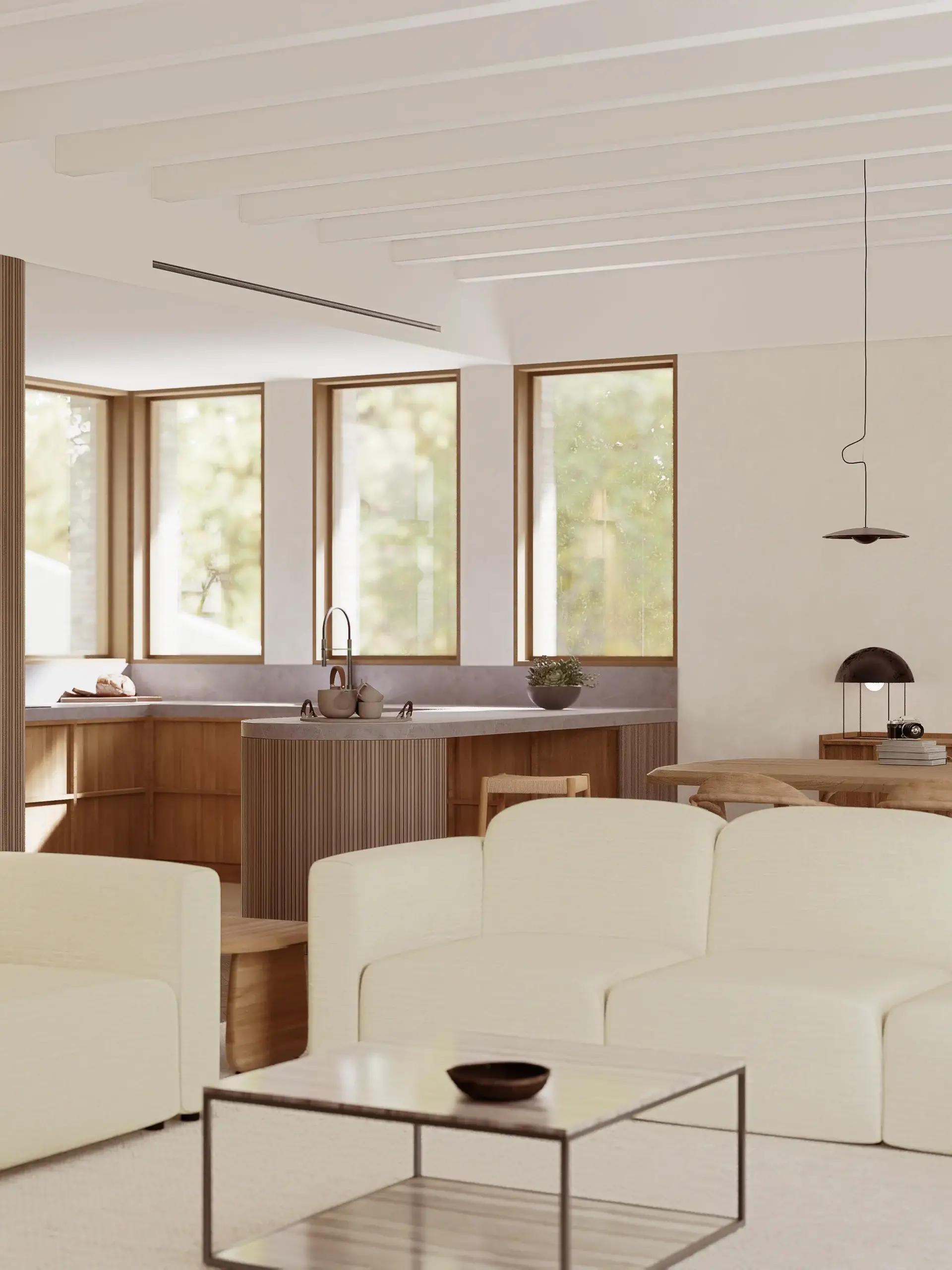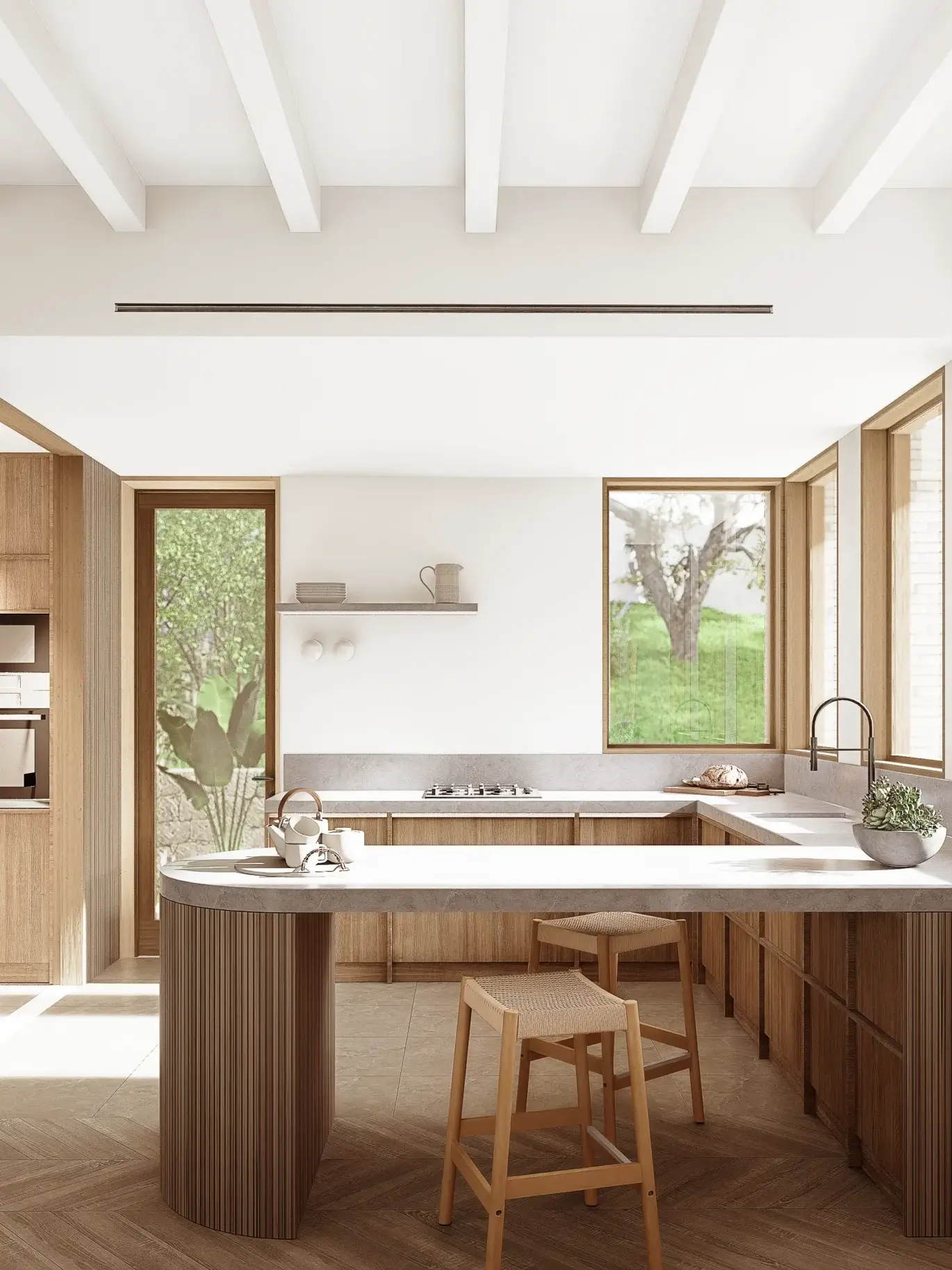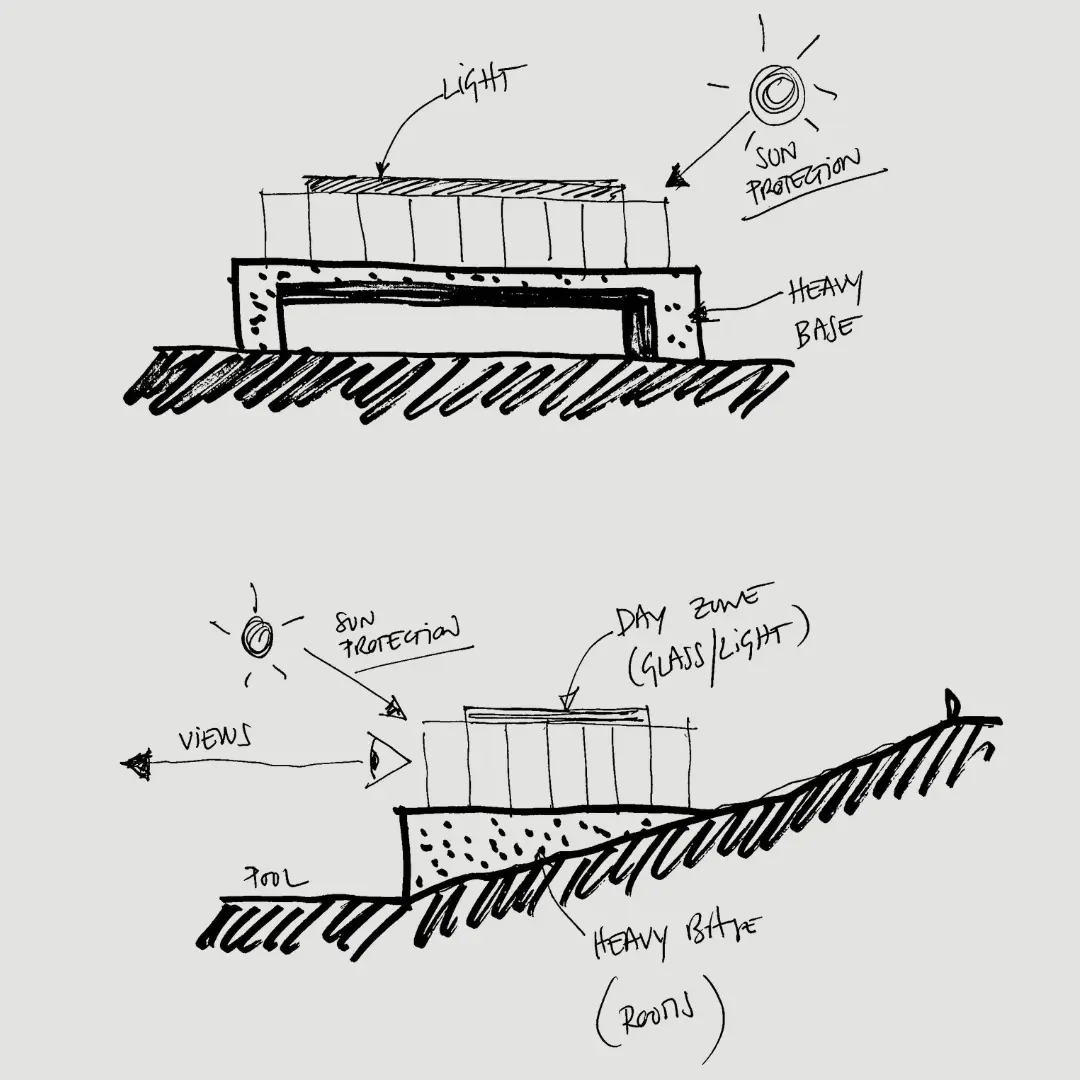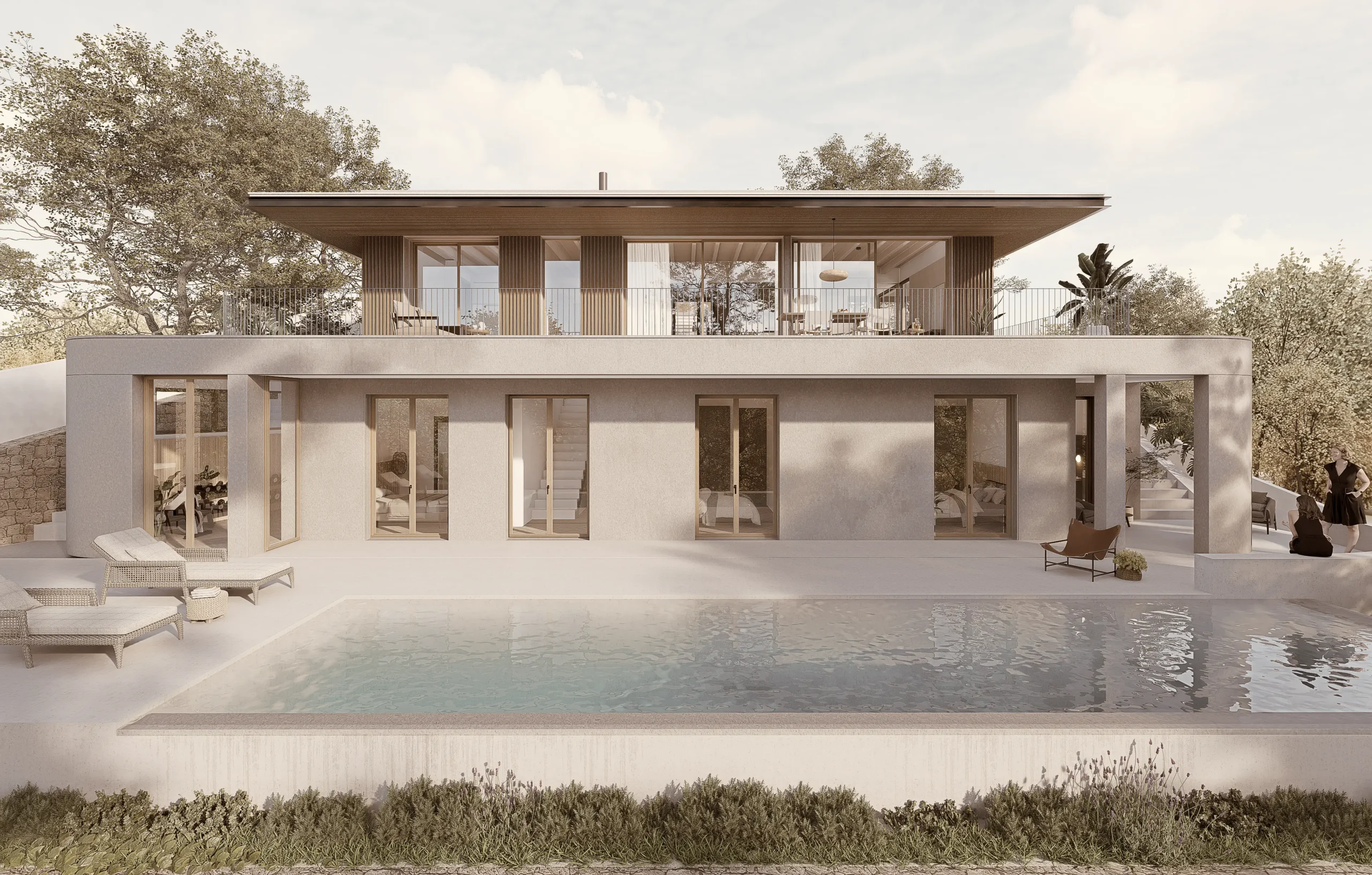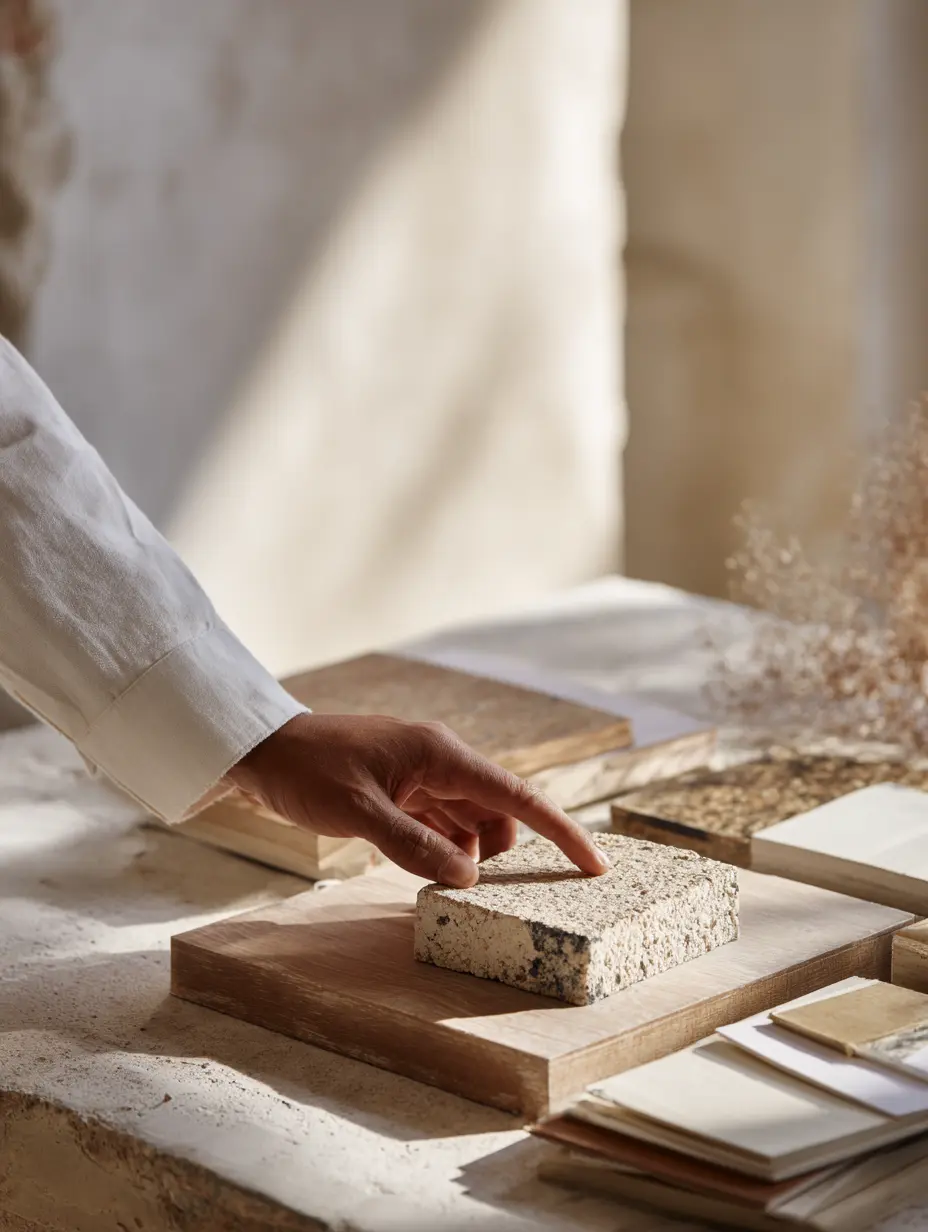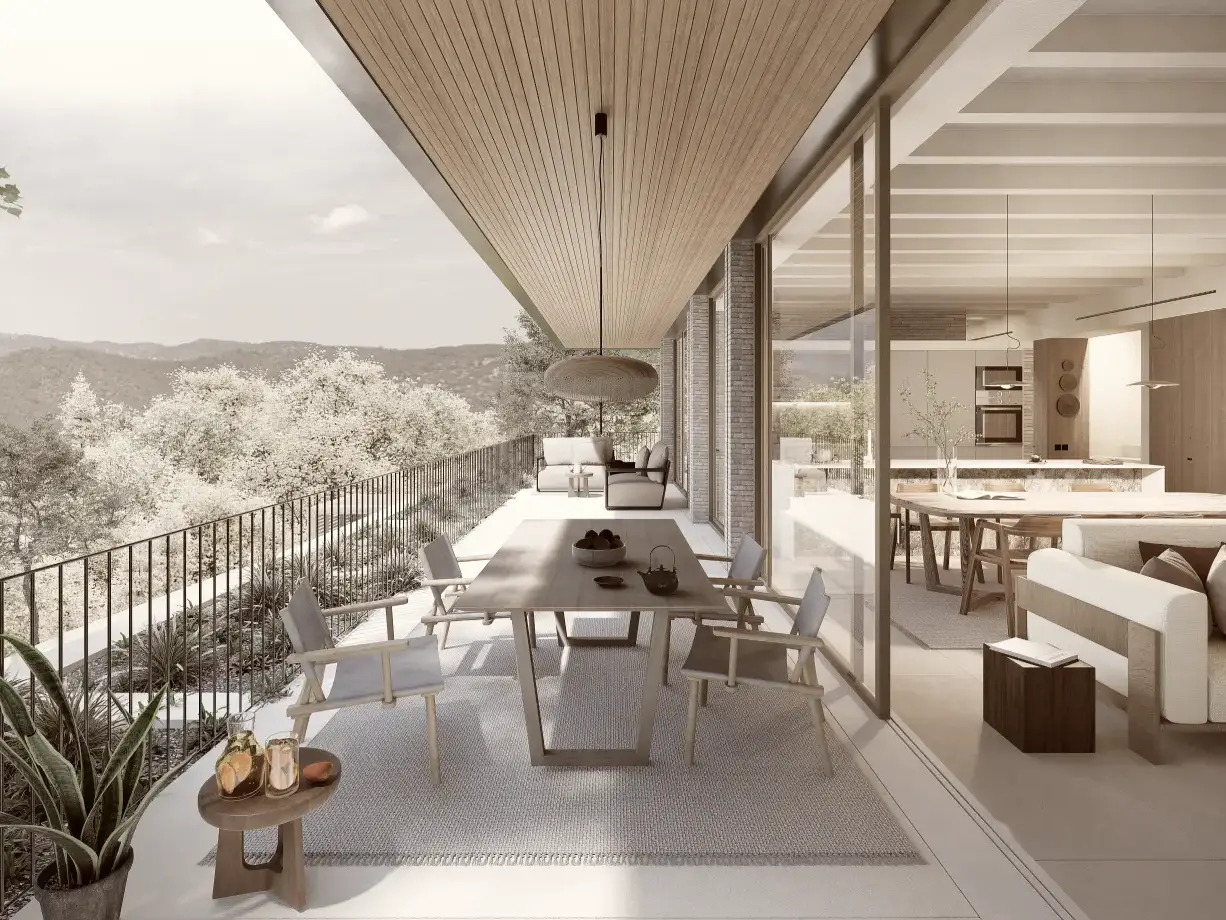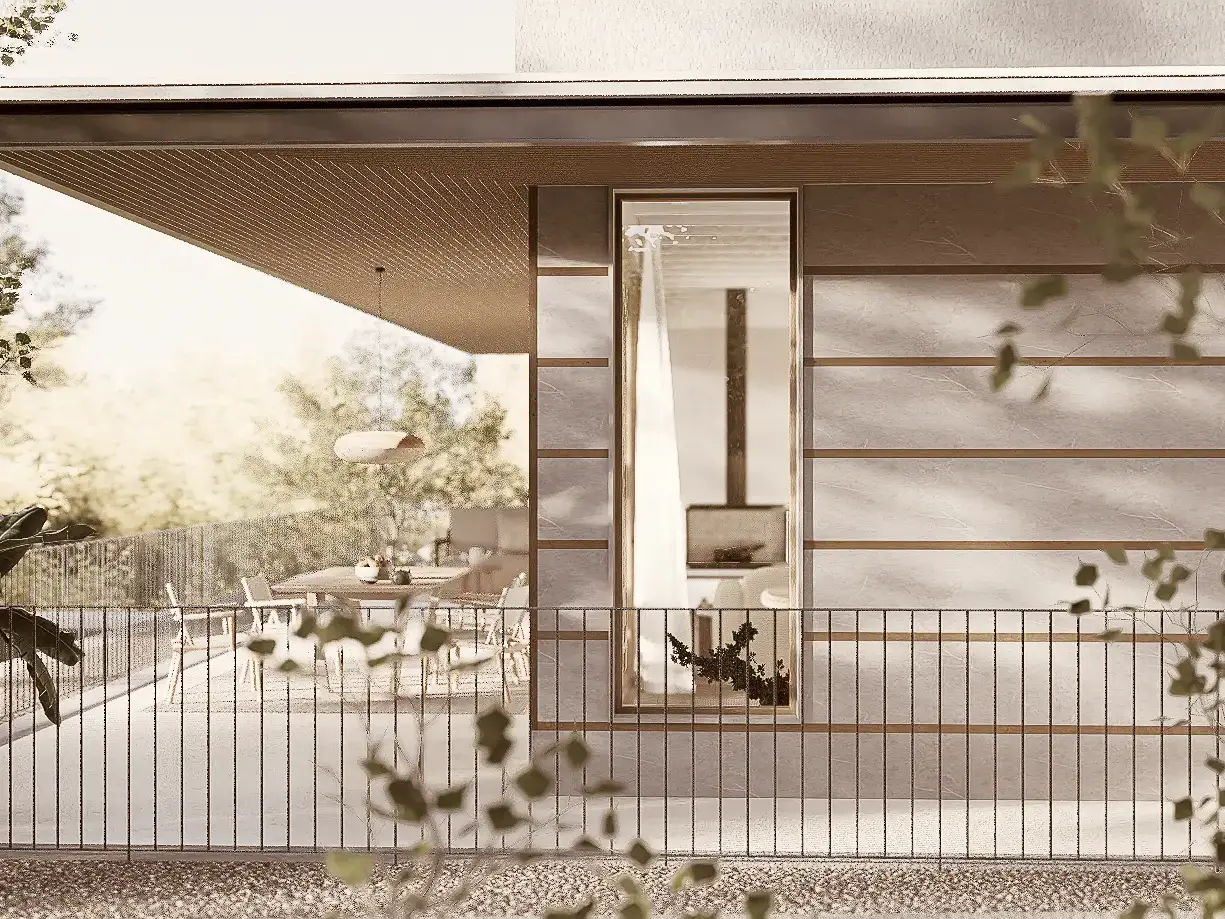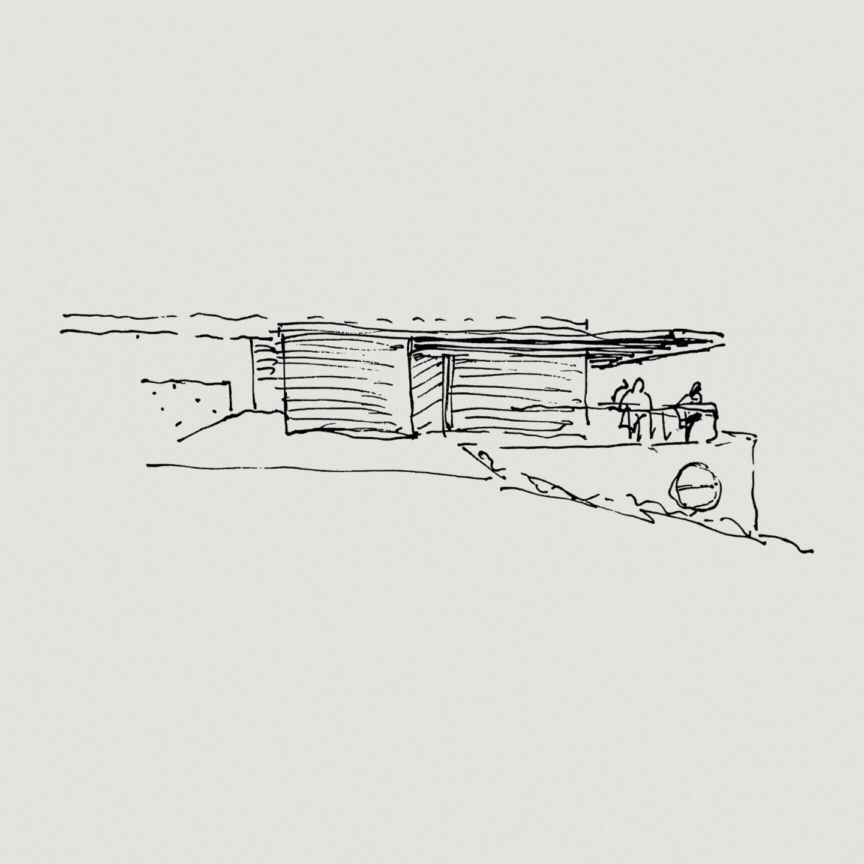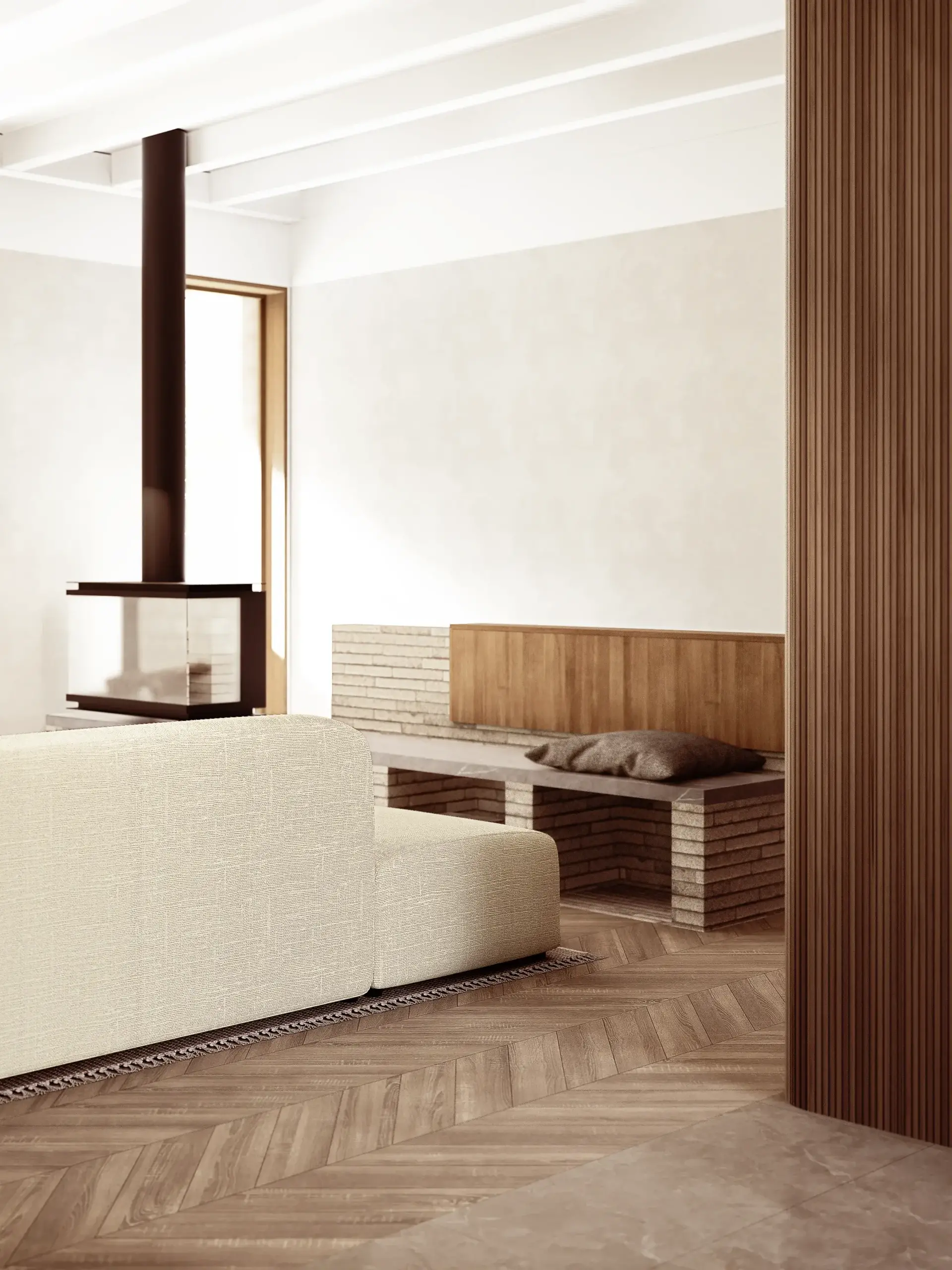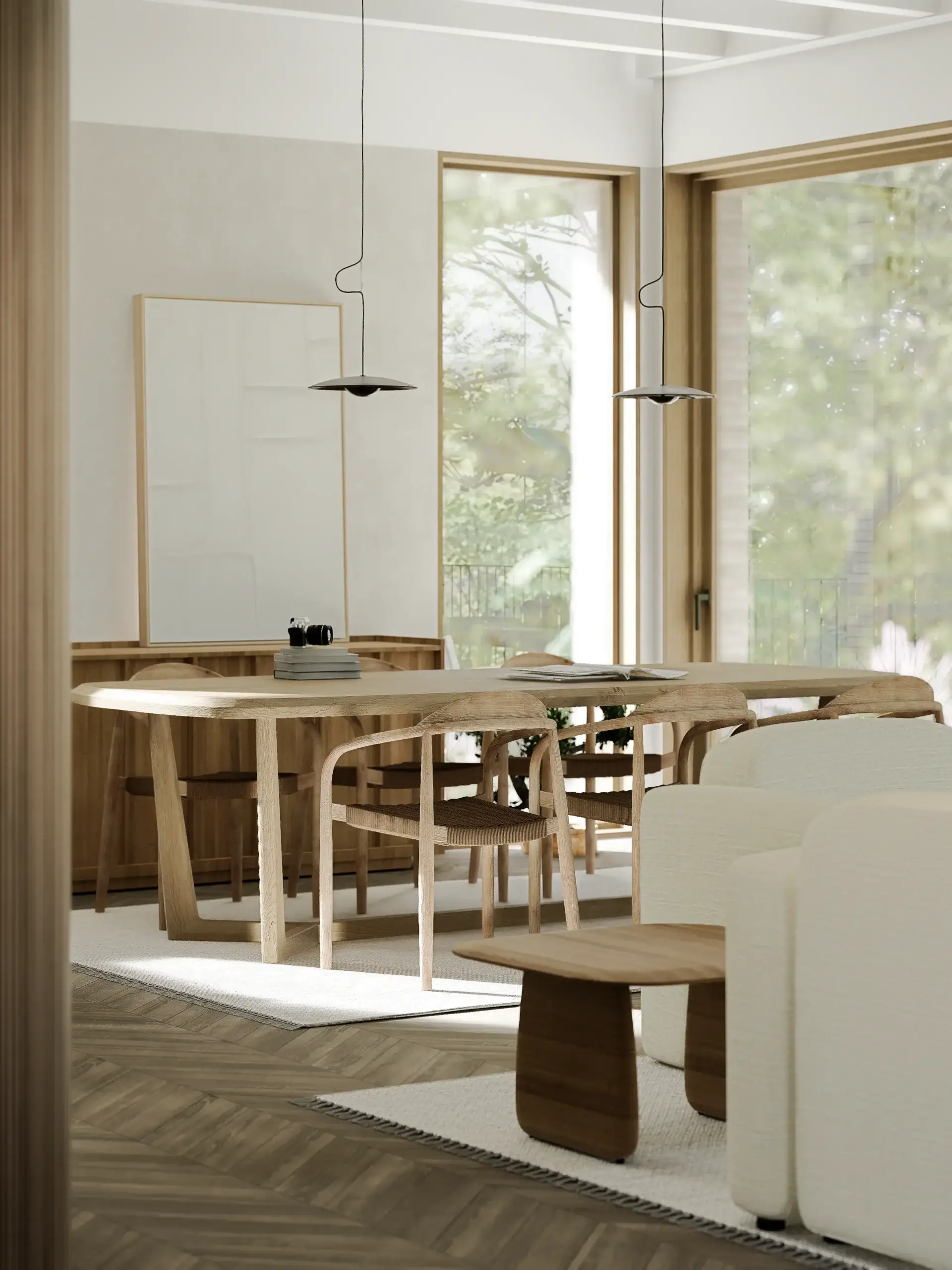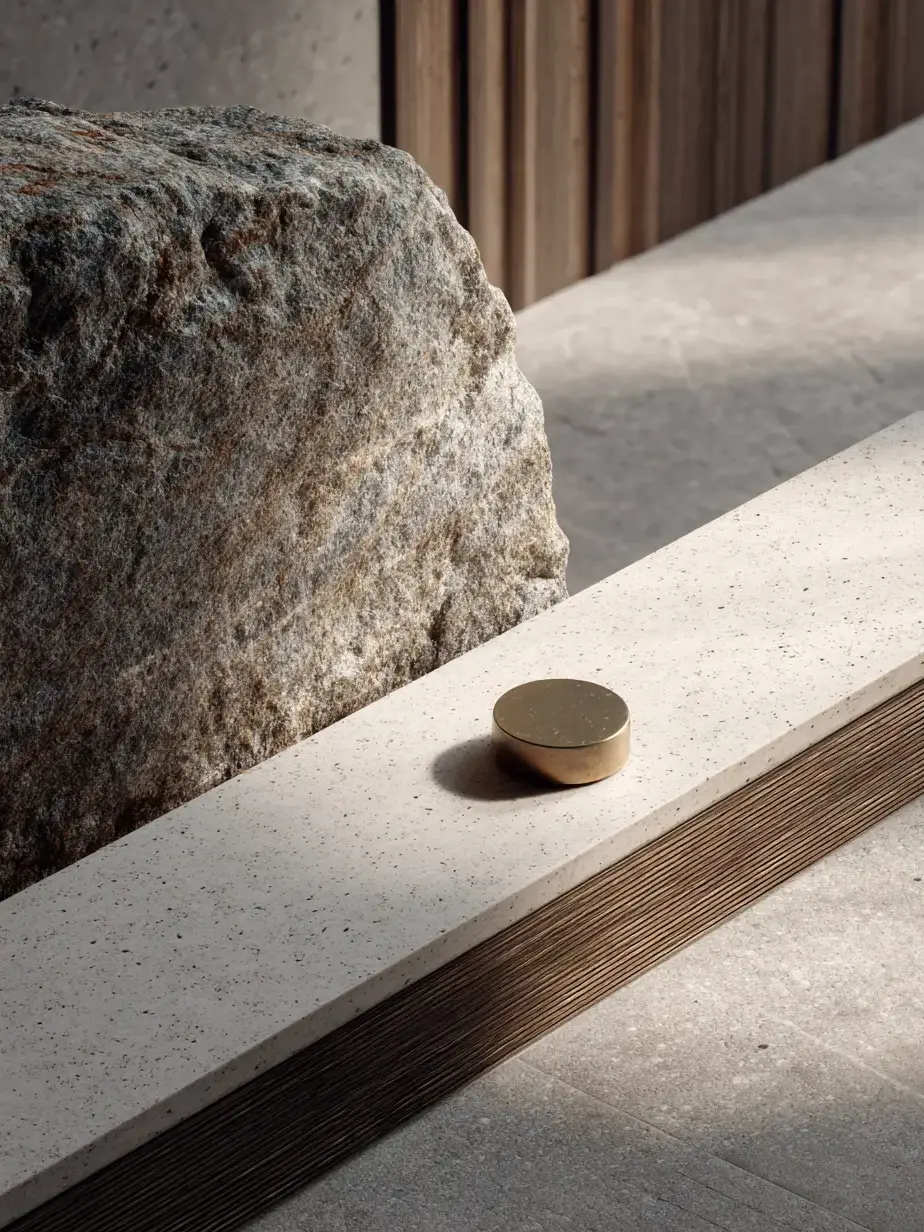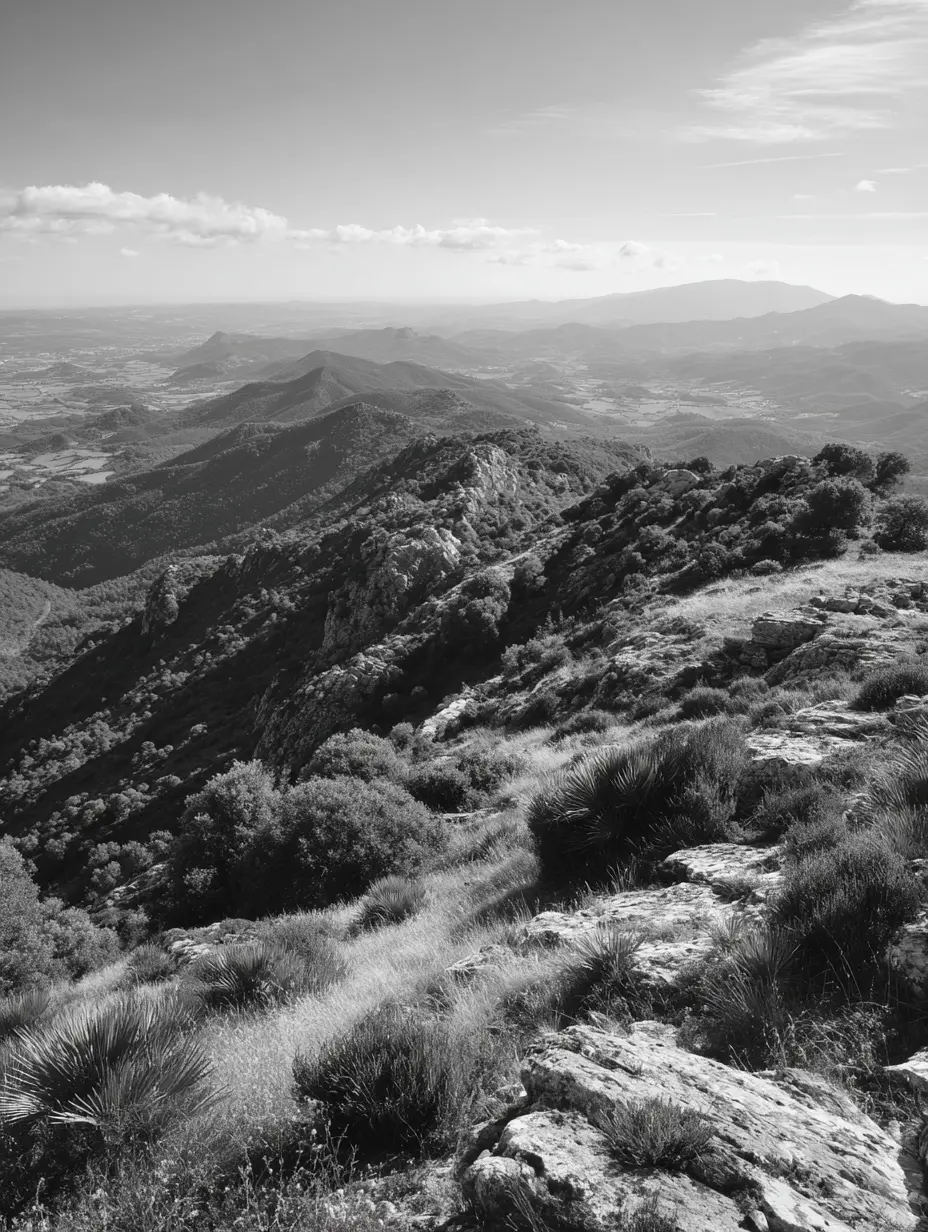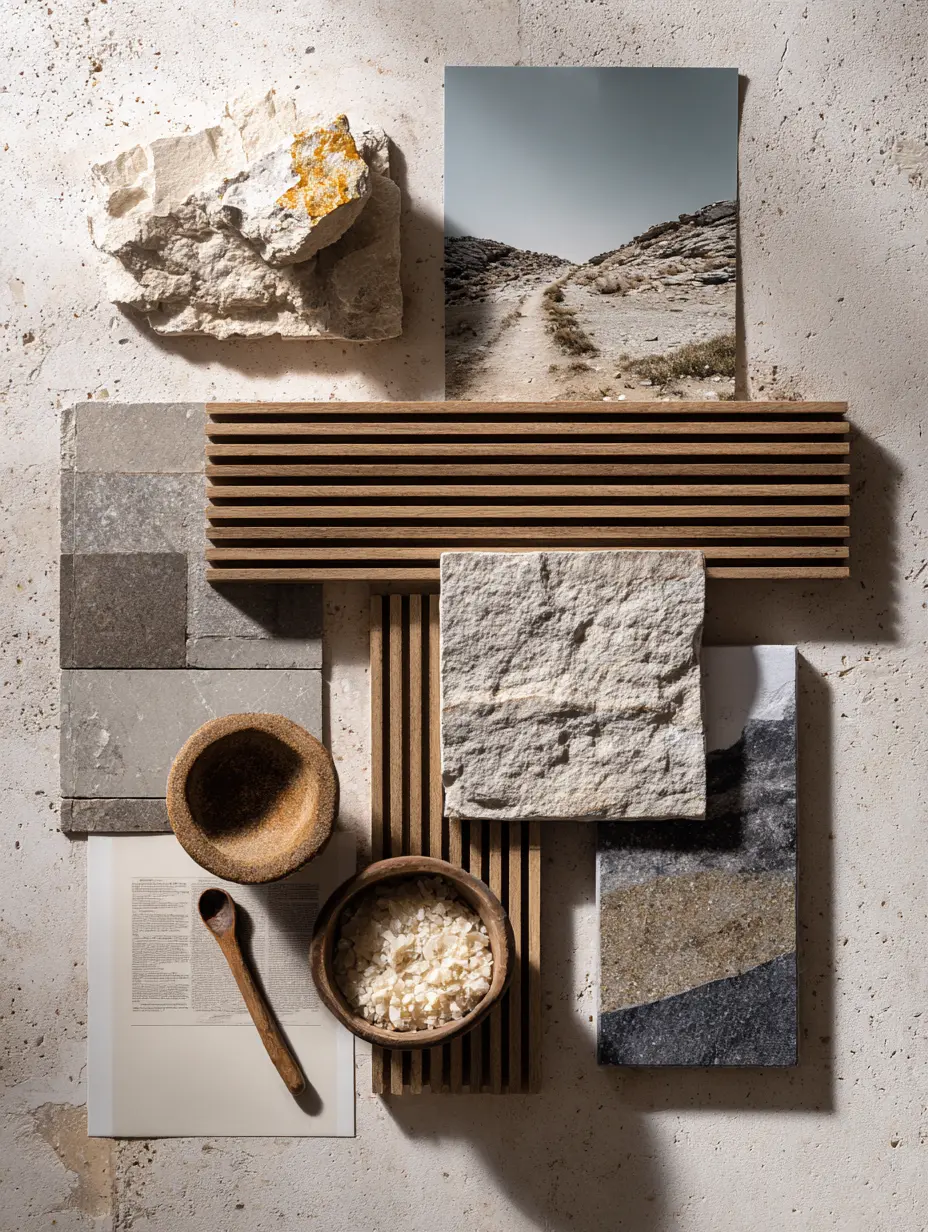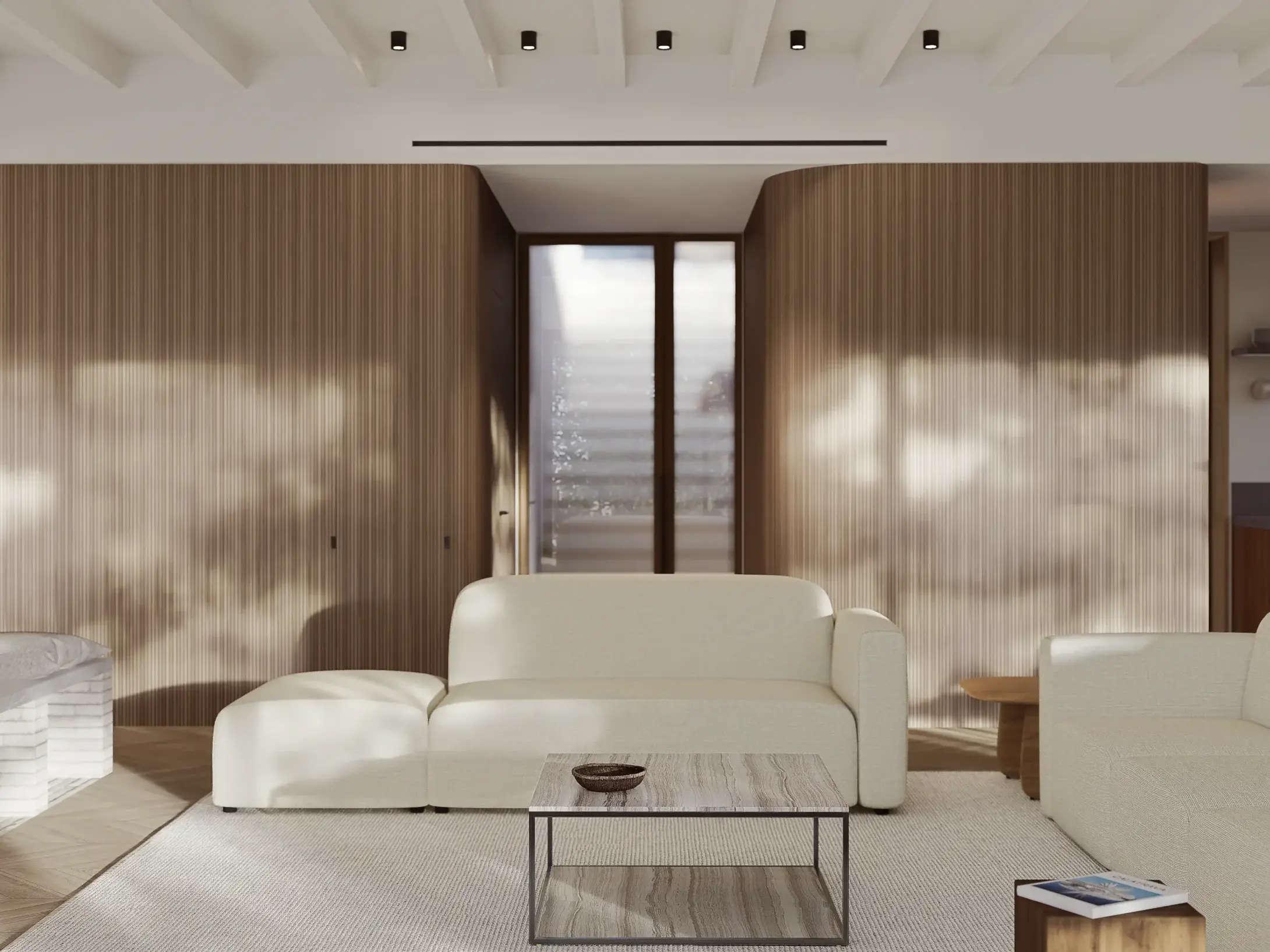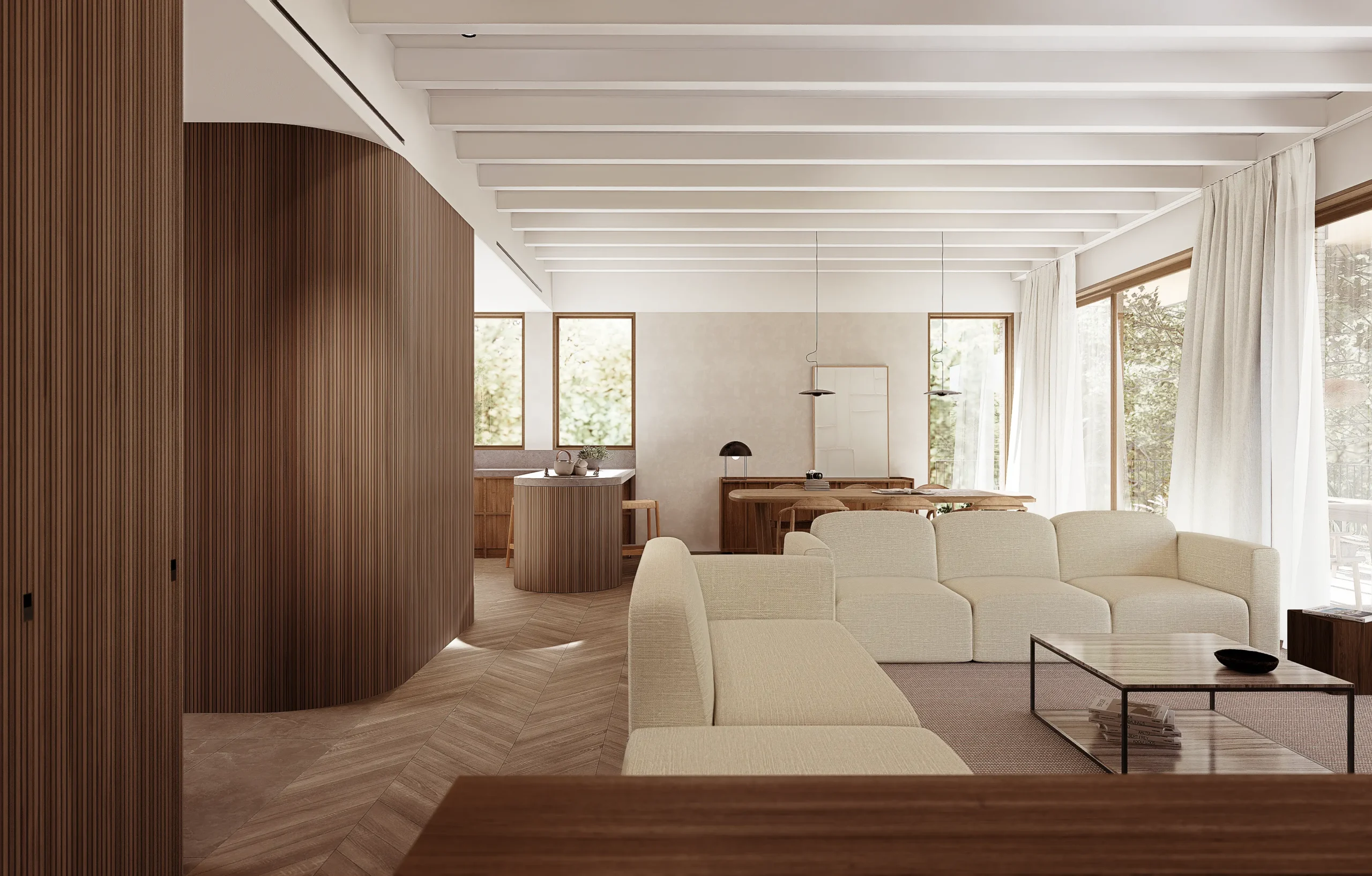Location
Olivella, Barcelona
Category
Residence
Photography
Fem
Year
2025
Nestled in the rugged slopes of the Garraf Hills, Olivella Hillside Home is conceived as an architecture of integration and balance. The steep topography of the site, with its characteristic golden stone, posed both a challenge and an opportunity: how to create a family home that would belong to the hillside rather than dominate it. The response was a design that unfolds in two gestures – a grounded, stone-like base that becomes one with the terrain, and a lighter, more domestic volume that hovers above.
From the street, the house remains almost invisible. A green roof, planted with local species, stretches out as a natural extension of the hill. Arriving here, the visitor leaves the car at the upper level, unaware of the expansive architecture hidden below. A discreet stair leads down through the planted roof, and it is only upon entering the home that the landscape reveals itself – a sudden opening towards long views of the Garraf horizon, framed by broad panes of glass.
The hillside is both challenge and muse. By rooting itself in the Garraf slopes, the project embraces the tension between weight and openness, permanence and air. Olivella Hillside Home is not placed on the land – it becomes part of it.
These early drawings express the philosophy of the project: to inhabit the hillside through a dialogue of contrasts. A massive base anchors the dwelling, while the upper level lifts towards views and light. The result is an architecture defined by balance rather than imposition.
This choreography of concealment and revelation defines the spatial experience. What begins as a modest descent soon becomes a sequence of terraces and platforms cascading down the slope. The upper floor contains the living area and master suite, organised as a fluid open space where a central fireplace softly delineates zones without interrupting continuity. From here, the architecture extends outward into a generous terrace, shaded by a slender cantilever that hovers delicately over the massive stone base.
Beneath, the lower platform accommodates the children’s bedrooms, guest rooms and a gym that connects directly to the pool. At this level, architecture feels heavier, more rooted – a continuation of the terrain itself. The rough textures and ochre tones of the façade merge with the rocky hillside, creating an impression of permanence, as though the house had always been part of the slope.
The contrast between the two levels is central to the project’s philosophy. “The idea was to create a grounded base, massive and tactile, that anchors the house to the land, while the upper floor offers a more refined, human scale of living,” explains the architect. “Between these two layers – the rock below and the air above – life unfolds in balance.”
Materiality reinforces this dialogue. The lower level is clad in earthy, textured surfaces that resonate with the stone of the Garraf. In contrast, the upper floor embraces a domestic tactility: iroko wood, slender slatted panels, and smooth grey stone surfaces that capture light with subtle elegance. Curved wooden walls wrap the interiors, their vertical rhythm adding warmth while softly articulating the kitchen and dining areas. Grey stone countertops, ceramic details and oak furnishings weave together a palette that feels calm and enduring.
The palette begins here, in the tactile encounter between hand and stone. Rough, warm and timeless, each material carries the essence of the Garraf landscape. Together they weave an atmosphere of serenity, where architecture becomes an extension of the hillside itself.
The creative journey begins with a simple principle – to root the home in the hillside while opening it to views and light. From this guiding idea, each decision follows: volumes, materials, details. Architecture here is a process of refining balance between earth and horizon.
Light enters the house in shifting ways. Large windows in the living spaces bring in the expansive views, while softer side openings frame intimate glimpses of trees and sky. The atmosphere is serene, shaped not by excess but by restraint. Natural materials, warm textures, and soft tonal contrasts transform the interior into a space that feels both grounded and uplifting.
“
Architecture here is not about conquering the land, but about learning how to inhabit it.
- ARCHITECT
The architecture extends beyond aesthetics: it is a way of living with the hillside. The pool, set on the lowest platform, seems carved into the slope, its water reflecting the surrounding greenery and stone. The covered terrace above offers shelter in the heat of summer, while the green roof merges the home with the hill during cooler months. At every moment, the house acts as a mediator between human life and the dramatic geography of the Garraf.
The horizon stretches endlessly, a reminder of time and distance. The house embraces this vastness, opening its living spaces to views that dissolve the boundary between interior and landscape. Here, daily life unfolds against a backdrop of infinity.
The material palette reflects the duality of the project: a grounded base in ochre and cream stone tones, resonating with the Garraf hillside, and a refined upper floor combining iroko wood, grey stone and ceramic textures. Together, they create a home both rooted and tactile.
Ultimately, Olivella Hillside Home is an exercise in humility. It does not seek to overcome the steepness of the terrain, nor to erase its ruggedness. Instead, it listens carefully to the slope, shaping its platforms as extensions of the hillside itself.
In its duality – the heavy base and the light upper floor – the house becomes both shelter and outlook, rooted in the stone yet opening to the horizon. It is a serene and warm home, one that finds harmony in the contrast between permanence and openness, between the tactile presence of the earth and the airy expanse of the sky.
